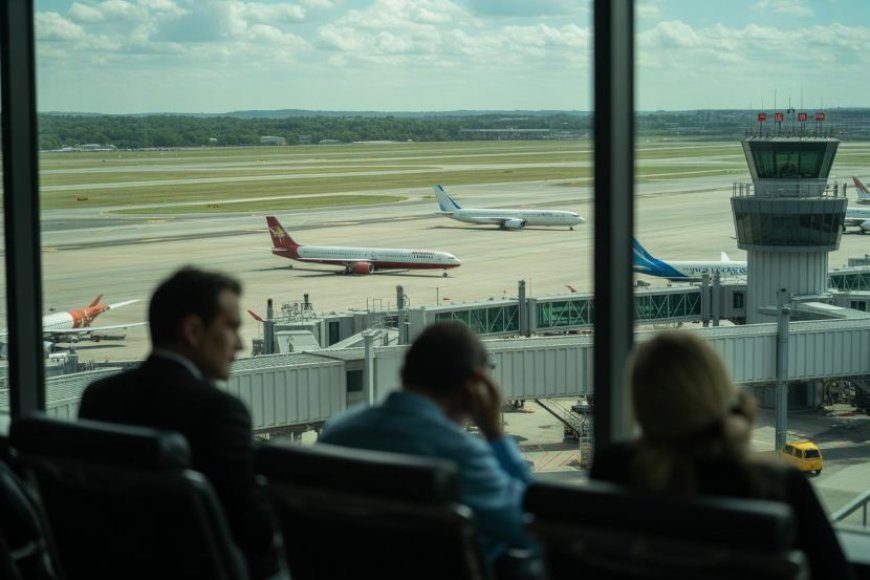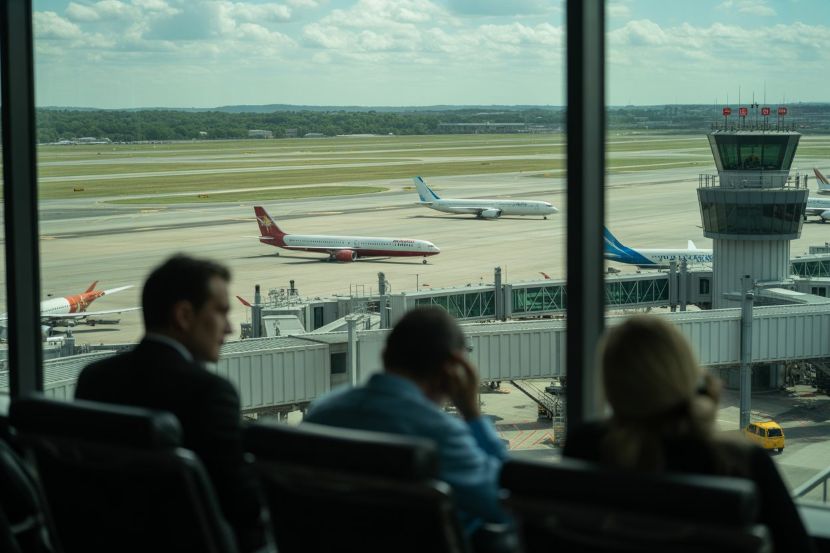FAA Proposes Extended Flight Cuts at Newark Airport, Due to Staffing Issues and Congestion: Here’s All You Need To Know


In a bid to manage air traffic more effectively, the Federal Aviation Administration (FAA) has proposed extending flight cuts at Newark Liberty International Airport until October 2026. This extension follows a series of major disruptions and continues as a response to the ongoing air traffic controller shortage and congestion at the Newark Airport one of the U.S. busiest airports.
The FAA initially implemented flight reductions in May 2025 due to growing concerns about the aging U.S. air traffic control system, which had faced challenges in managing high traffic volumes and ensuring safety during peak periods. Following these disruptions, the FAA has now proposed a continuation of these measures to manage congestion and maintain safe air travel.
Background on Newark’s Flight Cuts
The FAA amplified restrictions on air travel at Newark Liberty International Airport beyond May to now include the entirety of 2025 due to persisting issues. The FAA continues to alleviate congestion at US air traffic control centers which fluctuates due to staffing shortages. These restrictions will enable air traffic controllers to better facilitate the flow of air traffic at Newark International Airport, providing improved travel efficiency for arriving and departing passengers.
Newark Liberty International Airport serves as a major hub for United Airlines, with hundreds of flights passing through daily. The FAA‘s decision to reduce flights was seen as a necessary step in preventing further disruptions after a series of major flight cancellations and delays had raised significant concerns among travelers.
Staffing Shortages Impacting U.S. Airports
The FAA has acknowledged that it is currently facing a staffing crisis, with an estimated 3,500 air traffic controllers short of its targeted staffing levels. This shortage has resulted in forced overtime for air traffic controllers, extended workweeks, and growing concerns about flight safety. The shortage is not only impacting Newark but is being felt at other congested airports in the New York City area as well.
In late 2024, the FAA made the controversial decision to move 17 air traffic controllers from New York’s Terminal Radar Approach Control (TRACON) to Philadelphia. This decision was aimed at boosting staffing levels in New York City-area airspace, which has become one of the busiest and most congested in the world. However, this decision has been met with criticism, particularly after communications outages that disrupted air traffic control in the region.
FAA’s Efforts to Improve Air Traffic Control
Purchasers of travel have to deal with a problematic challenge: the confusing ticketing system. European airline travelers don’t face the same airline issues, who utilize simple, unified transfer systems with one ticket for multiple hops. Cross border European train travelers have to piece together multiple tickets from various national companies. This is especially troublesome for people who suffer from the incapacity to handle disruptions in their travel timetable.
Last month, the Transportation Department’s Office of Inspector General (OIG) announced it would launch an investigation into the FAA’s 2024 decision to relocate air traffic controllers from Newark. The OIG’s review is prompted by the two serious communications failures that occurred in April and May, which left controllers in Newark‘s airspace unable to communicate with aircraft in the area. These incidents highlighted the vulnerabilities in the current air traffic control system.
Newark Airport’s Impact on Passengers
Responses to the FAA proposal have been evenly split. For some travelers, especially the frequent ones, the added slice of the flight cuts brings to them added frustration as well as added uncertainty. Passengers traveling to and from Newark, including those connecting to other regions of the country, will have to brace themselves for potential delays and cancellations. The FAA still has some way to go in dealing with the underlying problems that need to be solved in the interruptions; thus, the flight cuts situation is still volatile.
One of the major factors contributing to flight delays at Newark is the airport’s limited capacity for handling incoming and outgoing flights. Despite recent upgrades and construction projects aimed at increasing capacity, Newark remains one of the most congested airports in the country. This congestion, combined with staffing shortages, continues to put a strain on air traffic operations.
FAA’s Commitment to Ensuring Safety
The FAA has consistently pointed out that the purpose of the flight reductions is to improve safety and alleviate the persistent staffing and equipment-related bottlenecks. Improvements in staffing and air traffic management systems at Newark and other major airports is a process which is expected to stretch to 2026. Striking a balance between the needs of the passengers and the air traffic control system has remained a focus of the FAA.
The Future of Newark Airport’s Operations
As the FAA seeks to address the staffing shortage and air traffic congestion at Newark, the future of the airport’s operations remains uncertain. While the FAA has taken steps to improve the situation, the extension of flight cuts through October 2026 indicates that the air traffic control system is still in need of significant reforms.
Given the importance of Newark Liberty International Airport in United Airlines’ network, continuing to reduce flights could have implications not only for travelers but for the financial performance of the airline as well. United Airlines, as well as the entire airline sector, faces significant reputation-based challenges due to persistent delays and cancellations, particularly in light of the approaching holiday travel surge.
Looking Ahead
Newark’s travel situation is expected to change in the coming months as the FAA collaborates with airlines and air traffic controllers to mitigate staffing shortages. Though these extended flight cuts will undoubtedly create challenges for travelers, the hope is that, in the long run, they will enable a more sustainable and safer travel experience.
For more information and updates, travelers are advised to check the official FAA website or Newark Liberty International Airport’s official site regularly.
The post FAA Proposes Extended Flight Cuts at Newark Airport, Due to Staffing Issues and Congestion: Here’s All You Need To Know appeared first on Travel And Tour World.






